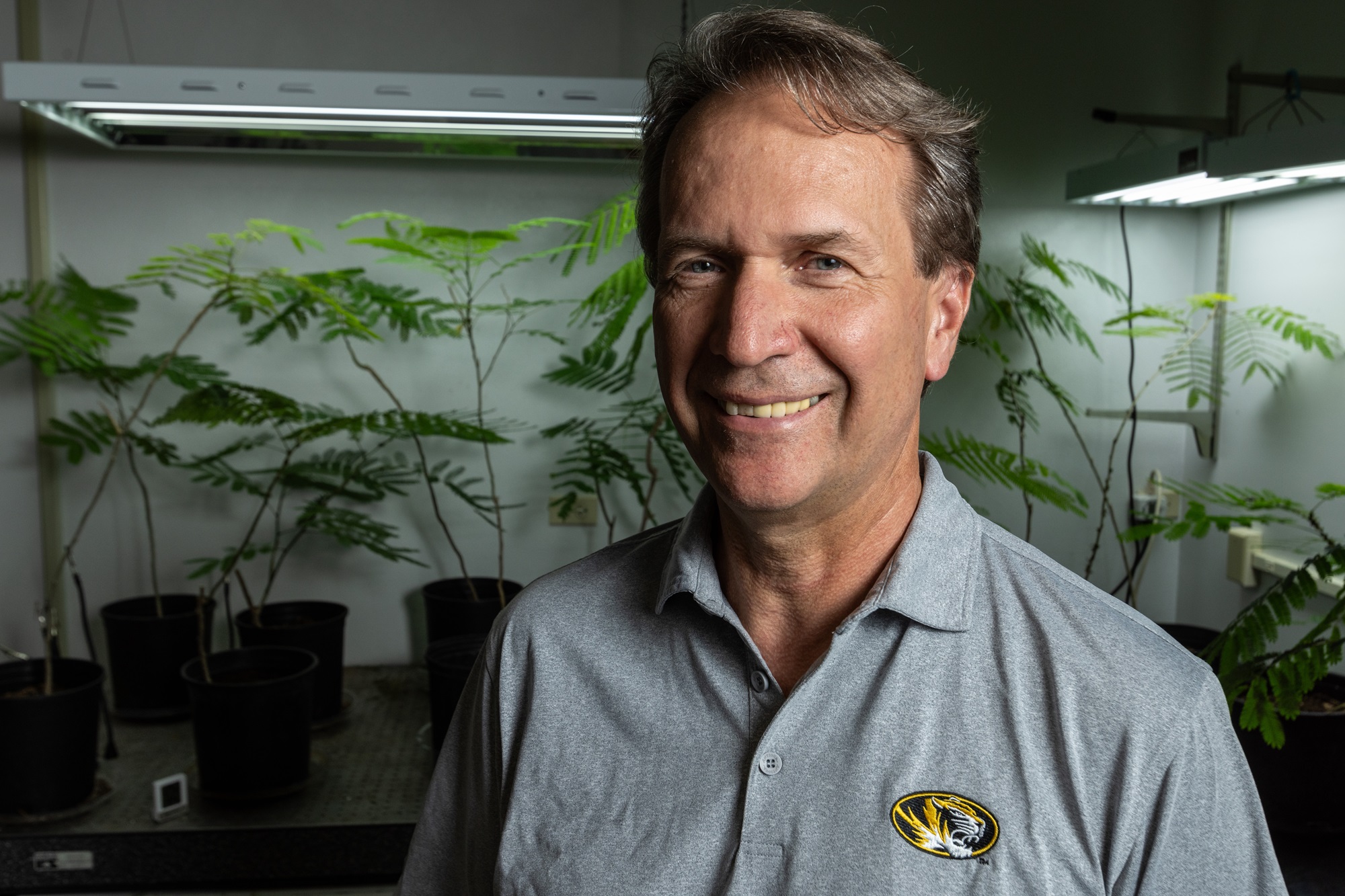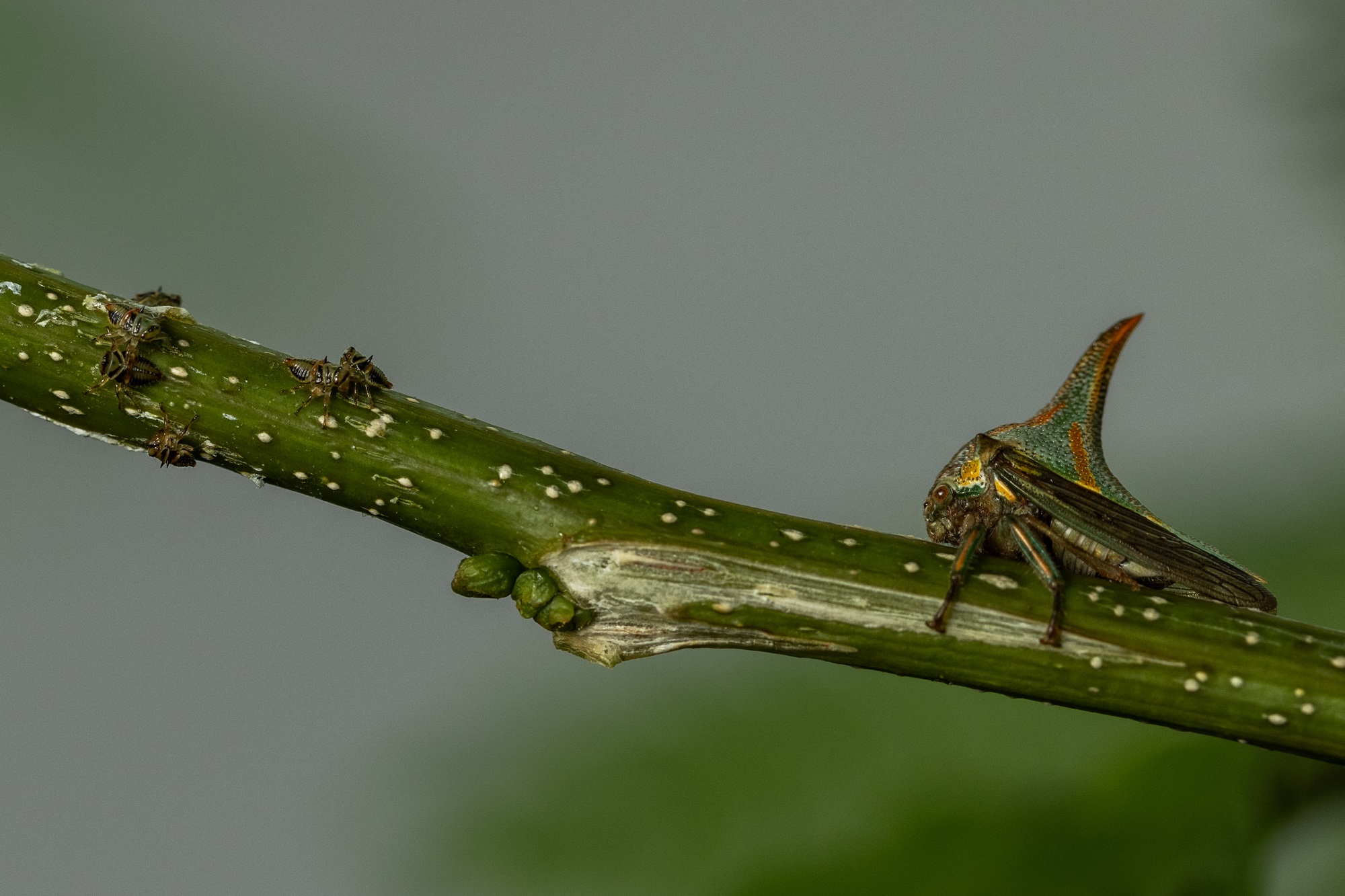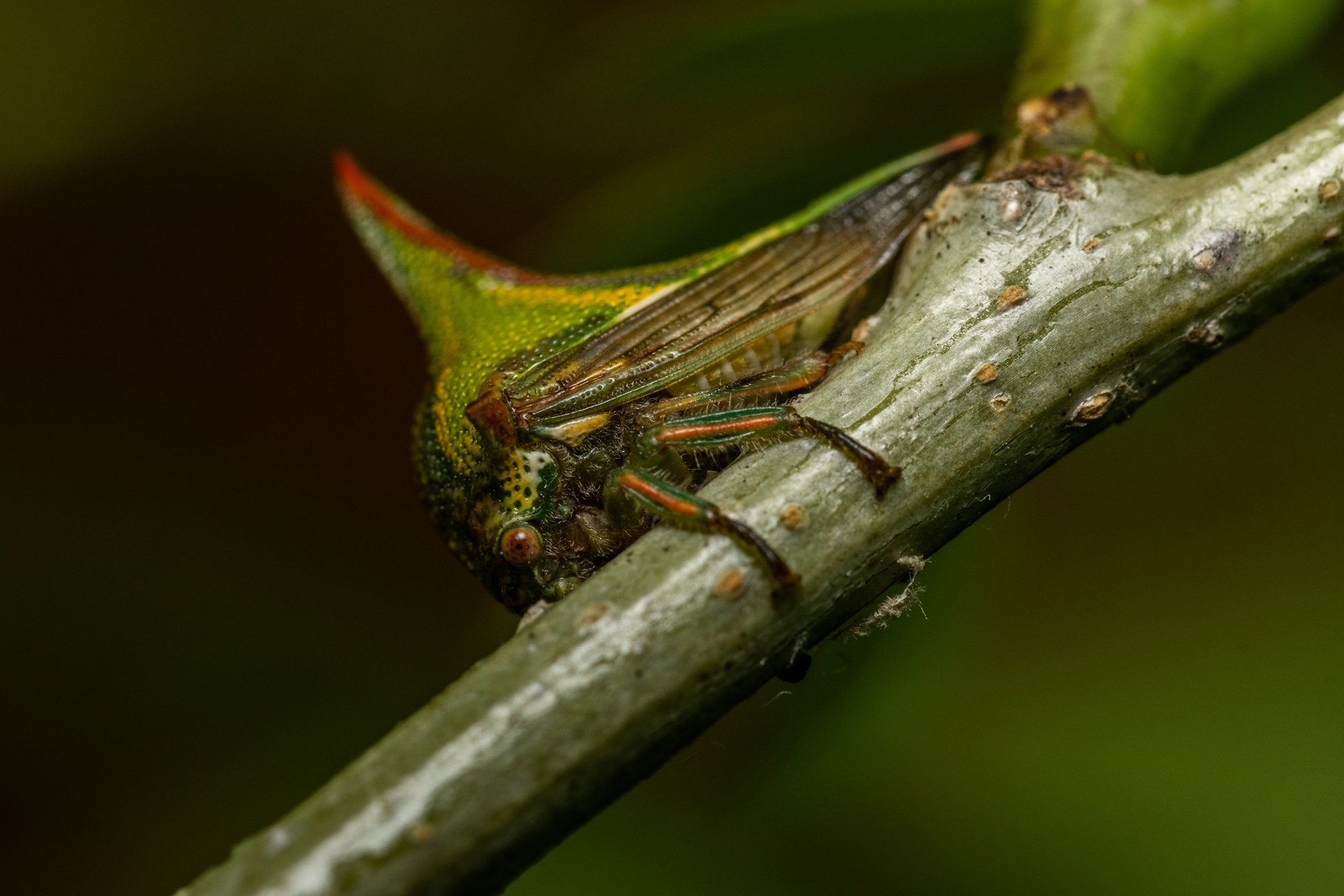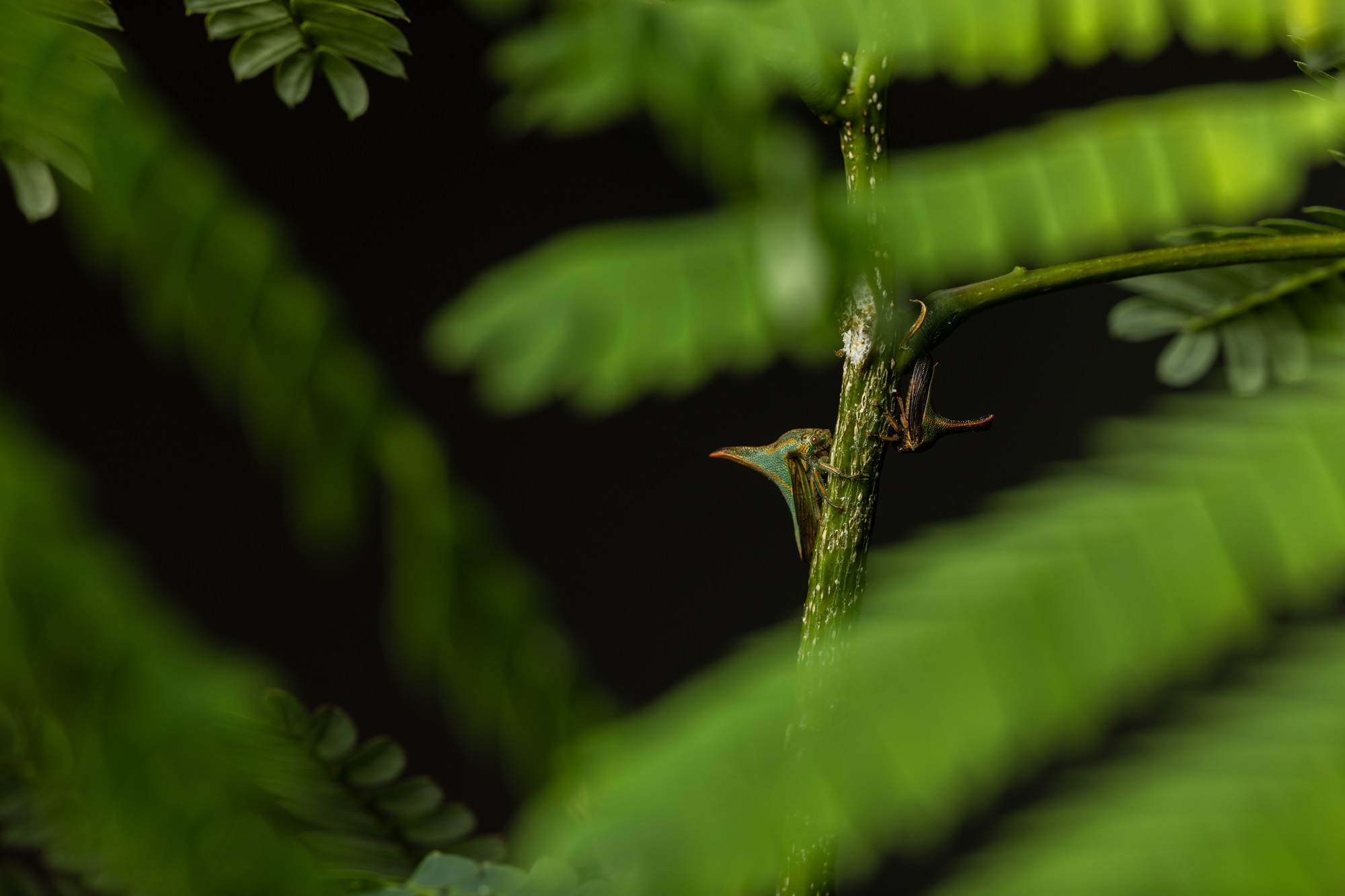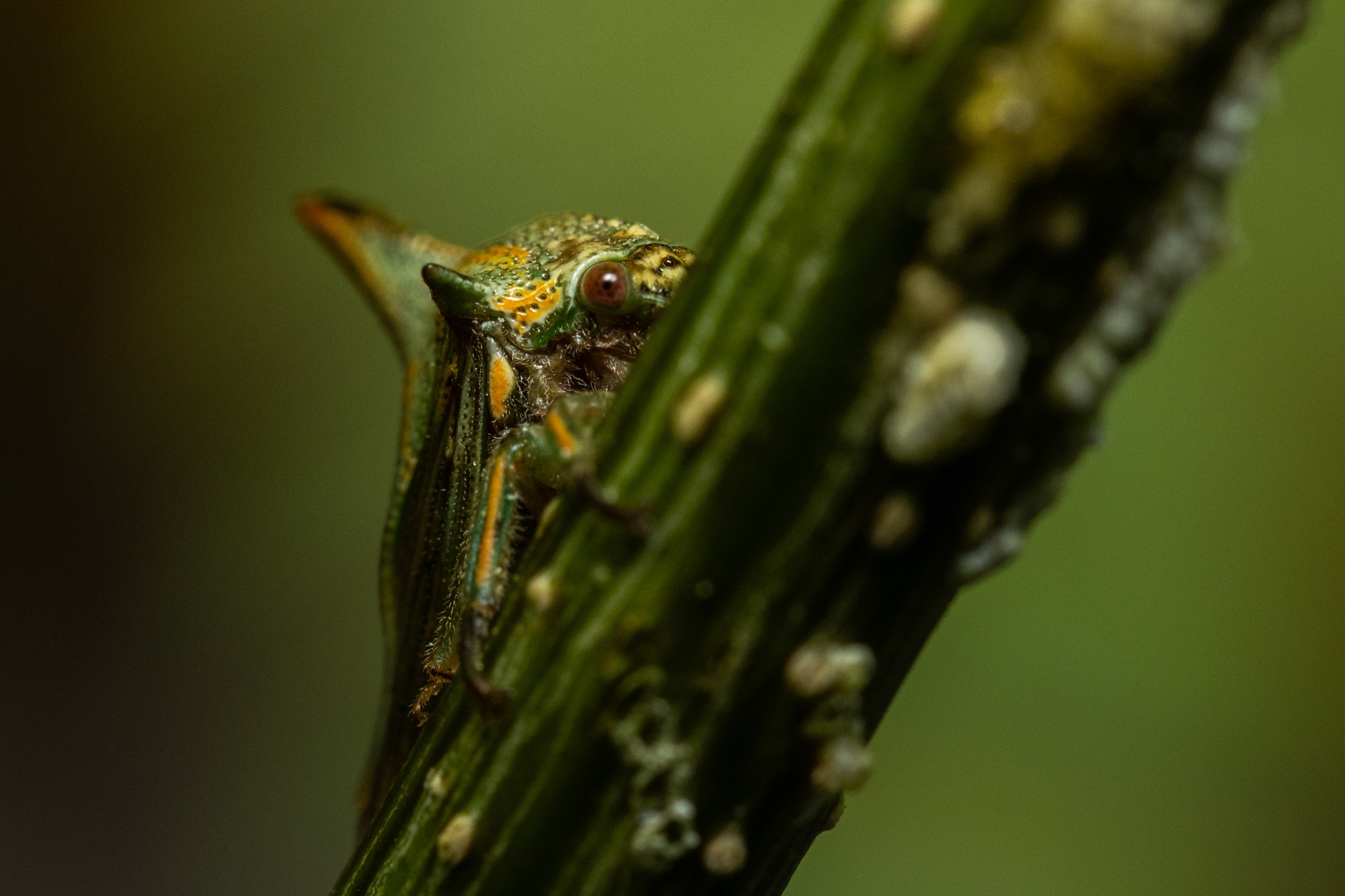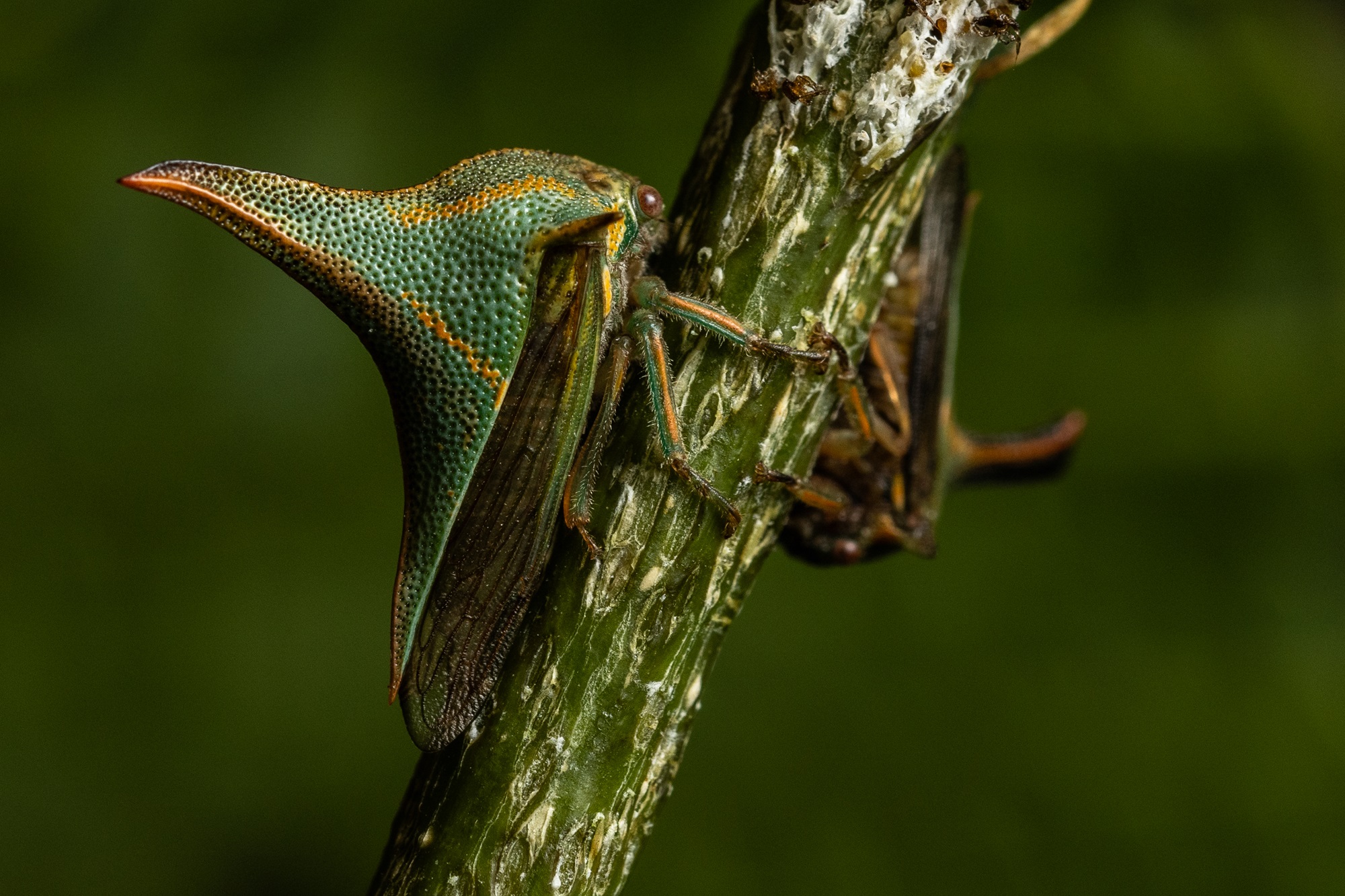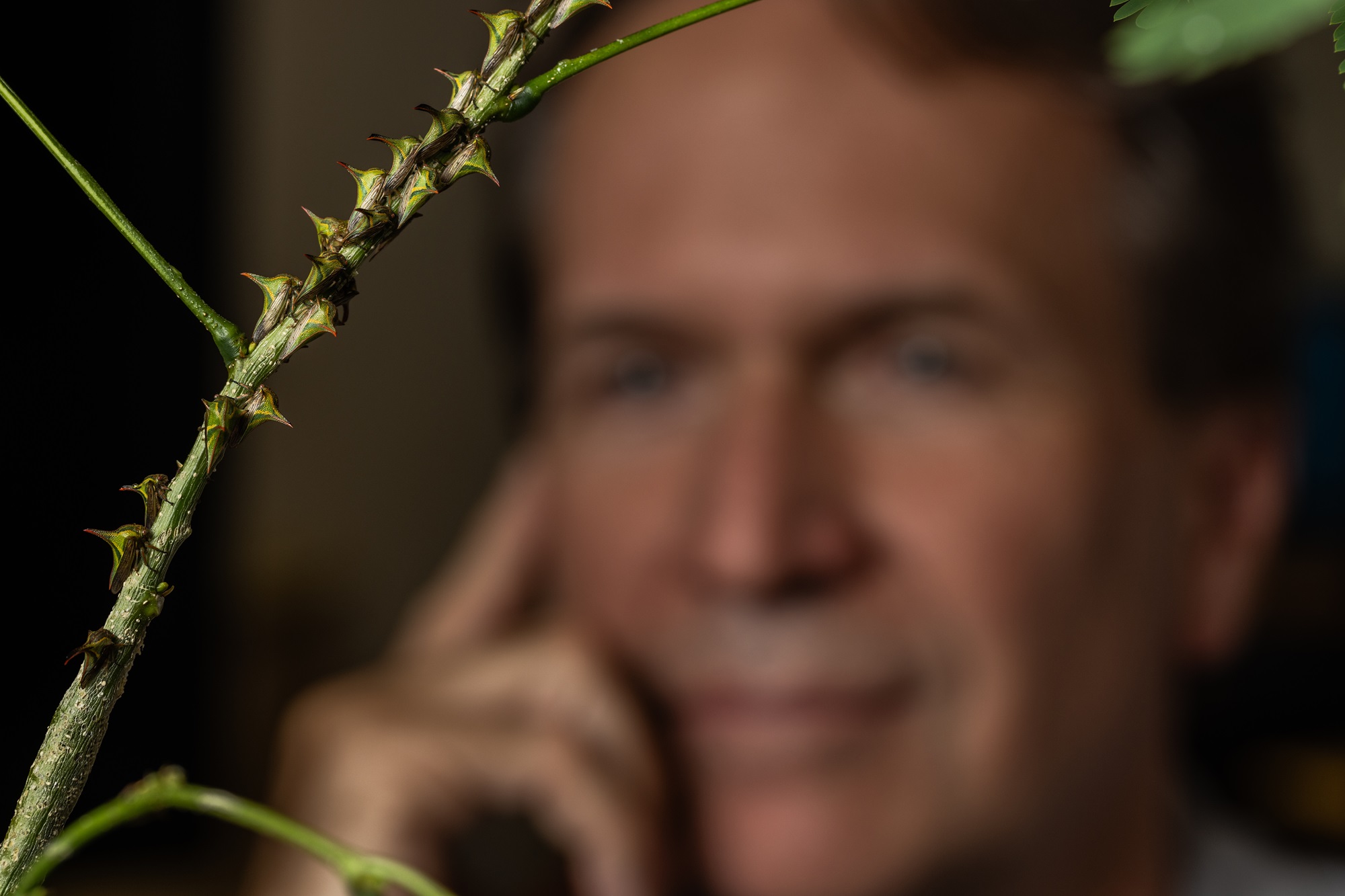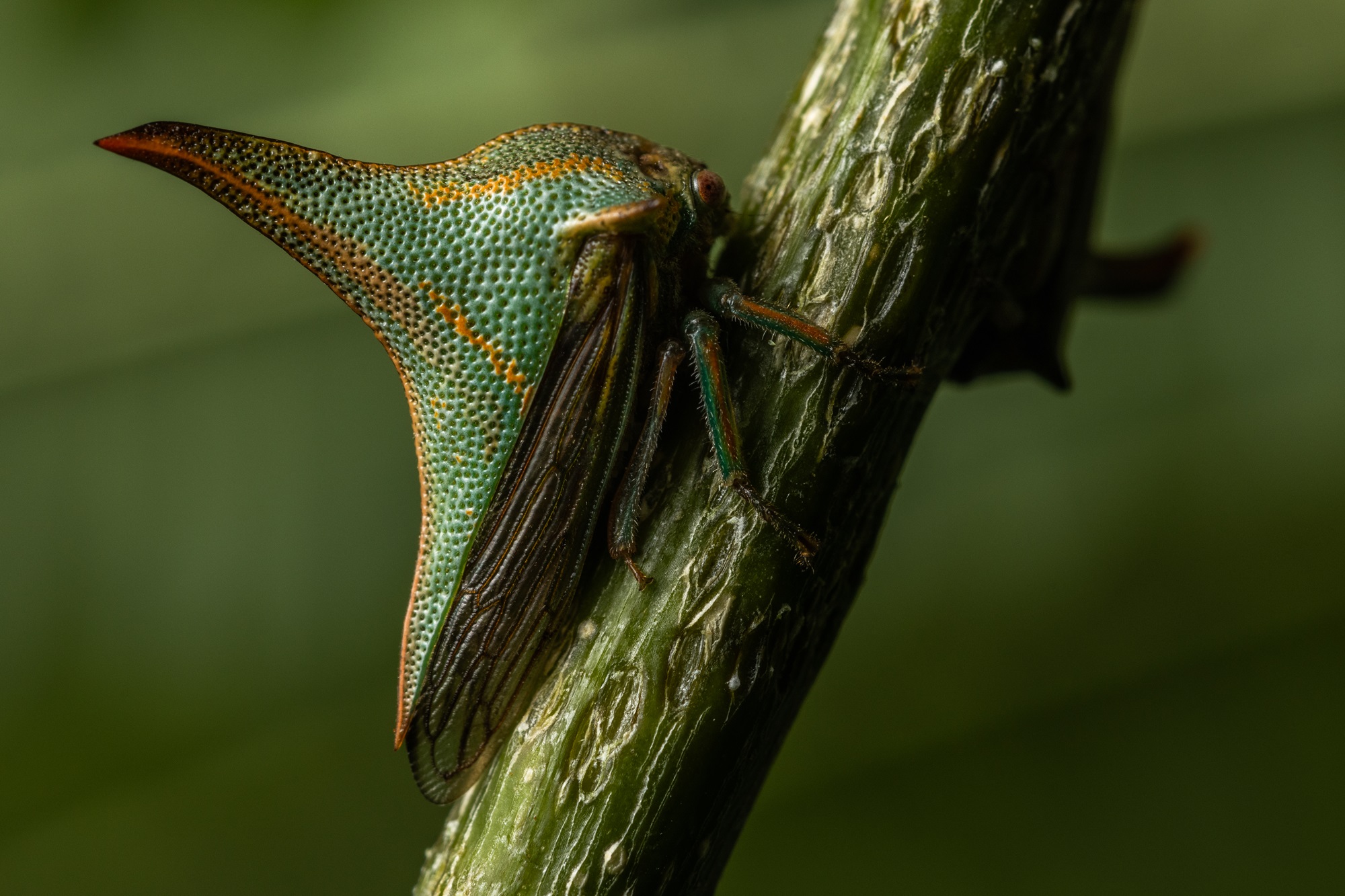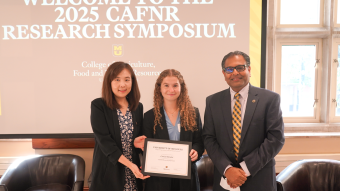By Eric Stann
Sept. 9, 2024
Contact: Eric Stann, 573-882-3346, StannE@missouri.edu
Photos by Abbie Lankitus
Video by Mizzou Visual Productions
Rex Cocroft’s groundbreaking research on insect communication is leaping off the pages of academic journals, recently inspiring an episode of a BBC documentary series. His fellow researchers have even taken the rare step of immortalizing his contributions by naming a new species of plant-feeding insects known as treehoppers — Cladonota rex — in honor of him.
For more than 30 years, the University of Missouri biologist has studied treehoppers — insects found on every continent on Earth except Antarctica — and how they signal each other by sending vibrations through a plant’s leaves and stem.
“Treehoppers have vibration sensors that detect when their legs move up and down, and they are extremely sensitive to that kind of motion,” Cocroft said. “Sound and vibration are very closely allied in treehoppers, and they experience vibration in the way we experience sound.”
Humans can’t detect the mechanical sound treehoppers make. But Cocroft uses sensors that amplify the signal in much the same way that guitars are amplified in popular musical performances.
“Piezoelectric materials produce an electrical current when under mechanical stress,” Cocroft said. “A piezo disk is commonly attached to an acoustic guitar's soundboard. The guitar's vibrations become an electrical signal in the piezo, which can be amplified by a speaker to produce sound.”
Treehoppers communicate by vibrating part of their bodies, usually the abdomen, and those vibrations are transmitted to the plant stem via their legs. They also can mimic cicadas by buckling a part of their thorax to make a clicking sound. Or they can shake their abdomen or the back part of their body to create songlike sounds that vary in pitch, tone and volume.
“Treehoppers typically have several different types of signals in their repertoire, and they are good at distinguishing between those and responding appropriately,” Cocroft said. “It’s not what we traditionally think of as an insect sound because the mechanics of producing and transmitting sounds are different. To some people, they sound more like the clicks, chirps and whistles of birds, frogs or whales.”
Recording sounds of nature
Cocroft, whose work influenced an episode of BBC’s “Plant Earth III,” was first introduced to treehoppers during graduate school. After borrowing a recording device originally used to record caterpillar sounds, Cocroft attached it to a plant with treehoppers on it. It was the first time he heard treehoppers, and he described the experience as incredible.
“With more than 3,000 species of treehoppers worldwide, every species has different songs, so you don’t know what you’re going to hear until you begin to listen,” Cocroft said. “And the plants are good at transmitting the treehopper’s vibrations because plant stems are thin, strong and flexible, qualities that are ideal for carrying mechanical waves.”
Cocroft, who arrived at Mizzou in 2000, said one of the best things about working on campus is having the chance to teach and mentor the next generations while also conducting research.
“Our students are great,” Cocroft said. “The best part about teaching is getting to know them as individuals. It’s fun and satisfying for me to help someone else get to a point where they can make their own discoveries. Then, I get to see how excited they are once they are empowered to do the work themselves.”
A musical inspiration
During high school, Cocroft learned to play the piano on an instrument that had belonged to his grandmother, a dancer and musician. The experience inspired him to pursue a music degree in college.
However, after graduating college, his childhood passion of biology — fueled by reading the adventures of 19th-century biologists — quickly took over once he spent time volunteering as a research assistant with the Division of Amphibians and Reptiles at the Smithsonian National Museum of Natural History in Washington, D.C. The experience would inspire a dramatic change in his career path.
One of Cocroft’s childhood dreams was to visit South America, and working at the Smithsonian gave him a chance to do just that. The musical connection inspired by his grandmother served him well in South America as he identified frogs by the sounds they made.
“Communication is such a key part of the behavior of any animal, and it tells us a lot about their biology,” Cocroft said.
After initially studying frog communication, Cocroft switched to insect communication in graduate school.
“I’ve always liked the exploration side of natural history, and there’s a lot we can still discover about how insects like treehoppers communicate,” Cocroft said.
